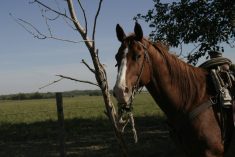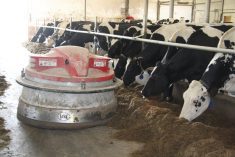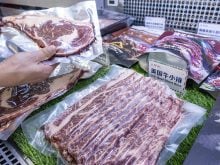MOOSE JAW, Sask. – A strong spring rally created optimism in the beef industry, but an analyst isn’t sure whether it will carry through for the cow-calf sector this fall.Canfax manager Brian Perillat told the Saskatchewan Stock Growers Association convention that the rally was much better than expected.”We didn’t hit the price peaks, but we had some pretty good margins in some feedlot cattle,” he said in an interview during the convention.Some operators have earned nearly $100 per head in the last two months. Perillat said lower demand and a high Canadian dollar will make it difficult for the rally to last until the fall.”We’re doing quite well given it’s a 95 cent dollar, but we’re struggling to be competitive,” he said.Demand through the summer is a bit of a question mark because cut-out values of boxed beef are dropping rapidly.”In the U.S. we were up to $1.70 and down to $1.55 and on a fairly steady decline,” Perillat said.Basis has been all over the place and is still volatile, he added.The Canadian cow herd has fallen back to pre-BSE levels with no immediate sign of rebuilding. There were 4.47 million beef cows in Canada Jan. 1. However, the herd has grown in Saskatchewan, which now has 30.9 percent of Canada’s beef cows compared to 27.7 percent in 2003.Alberta’s herd has dropped from 40.3 percent to 38.7 percent, while Manitoba has increased slightly from 11.7 percent to 12.5 percent.Perillat said Saskatchewan’s economic advantage is kicking in.”We have the lower land costs, lower feed grain value and that’s driving some of the movement of cattle to Saskatchewan,” he said.Cow herds around the world are contracting, except in Brazil.The U.S. herd is down one percent to 31.3 million beef cows, although Canadian Cattlemen’s Association president Travis Toews said his American counterparts think it has been more like four percent.The reduced supply should support prices, Toews said, but the economic recession is still having an impact. Other countries have also struggled with rising currencies, he added.”Ours has strengthened likely the least.”The industry will have to adjust to the higher dollar, which Toews said could take five or six years.
Read Also

Manitoba extends Crown land rent freeze
Manitoba government links the continued rental rate freeze on grazing and forage leases to economic and environmental challenges facing the industry















